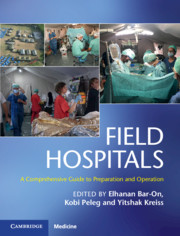Section 1 - History
Published online by Cambridge University Press: 09 January 2020
- Type
- Chapter
- Information
- Field HospitalsA Comprehensive Guide to Preparation and Operation, pp. 1 - 16Publisher: Cambridge University PressPrint publication year: 2020



